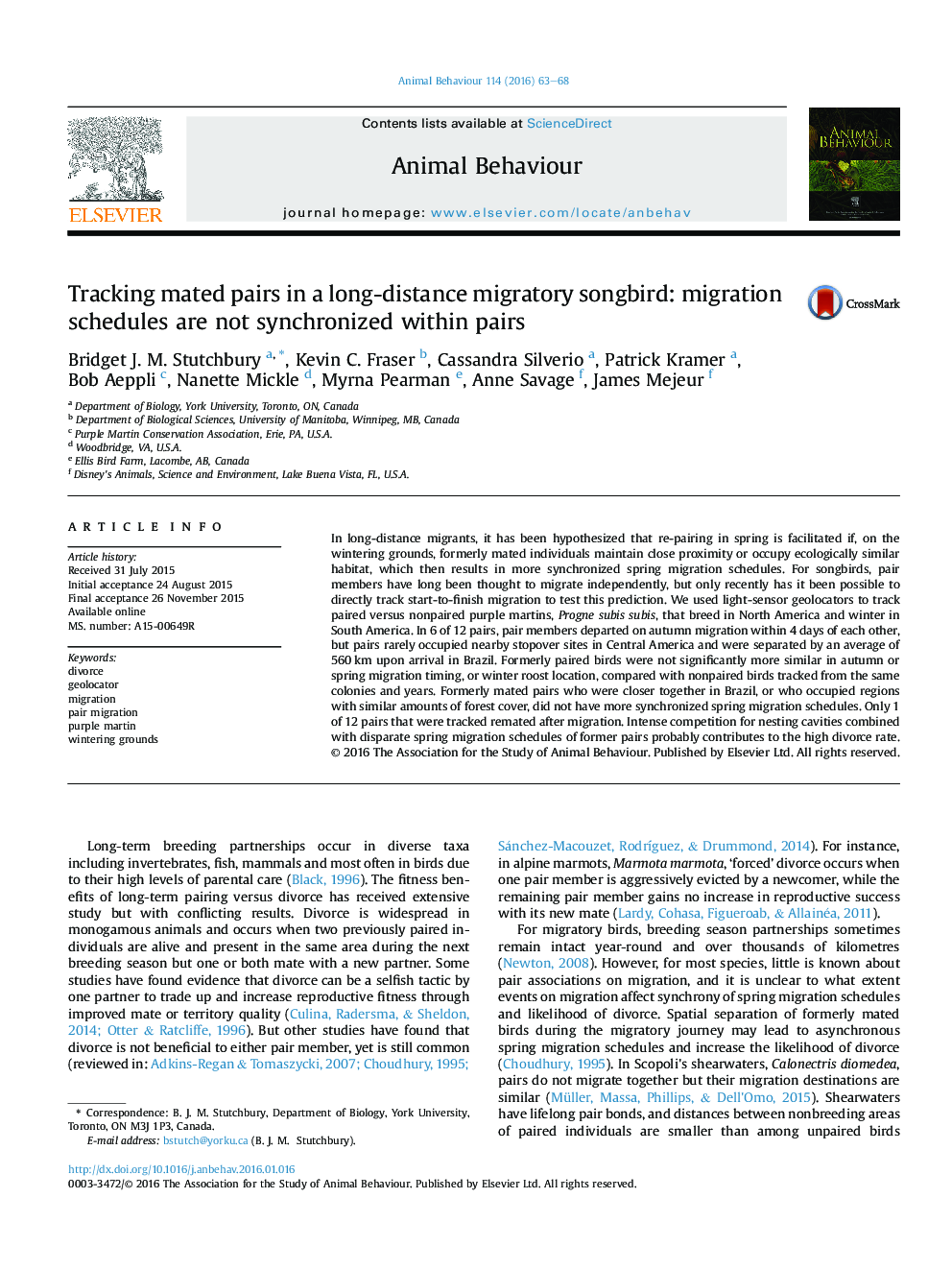| Article ID | Journal | Published Year | Pages | File Type |
|---|---|---|---|---|
| 8489172 | Animal Behaviour | 2016 | 6 Pages |
Abstract
In long-distance migrants, it has been hypothesized that re-pairing in spring is facilitated if, on the wintering grounds, formerly mated individuals maintain close proximity or occupy ecologically similar habitat, which then results in more synchronized spring migration schedules. For songbirds, pair members have long been thought to migrate independently, but only recently has it been possible to directly track start-to-finish migration to test this prediction. We used light-sensor geolocators to track paired versus nonpaired purple martins, Progne subis subis, that breed in North America and winter in South America. In 6 of 12 pairs, pair members departed on autumn migration within 4 days of each other, but pairs rarely occupied nearby stopover sites in Central America and were separated by an average of 560Â km upon arrival in Brazil. Formerly paired birds were not significantly more similar in autumn or spring migration timing, or winter roost location, compared with nonpaired birds tracked from the same colonies and years. Formerly mated pairs who were closer together in Brazil, or who occupied regions with similar amounts of forest cover, did not have more synchronized spring migration schedules. Only 1 of 12 pairs that were tracked remated after migration. Intense competition for nesting cavities combined with disparate spring migration schedules of former pairs probably contributes to the high divorce rate.
Keywords
Related Topics
Life Sciences
Agricultural and Biological Sciences
Animal Science and Zoology
Authors
Bridget J.M. Stutchbury, Kevin C. Fraser, Cassandra Silverio, Patrick Kramer, Bob Aeppli, Nanette Mickle, Myrna Pearman, Anne Savage, James Mejeur,
